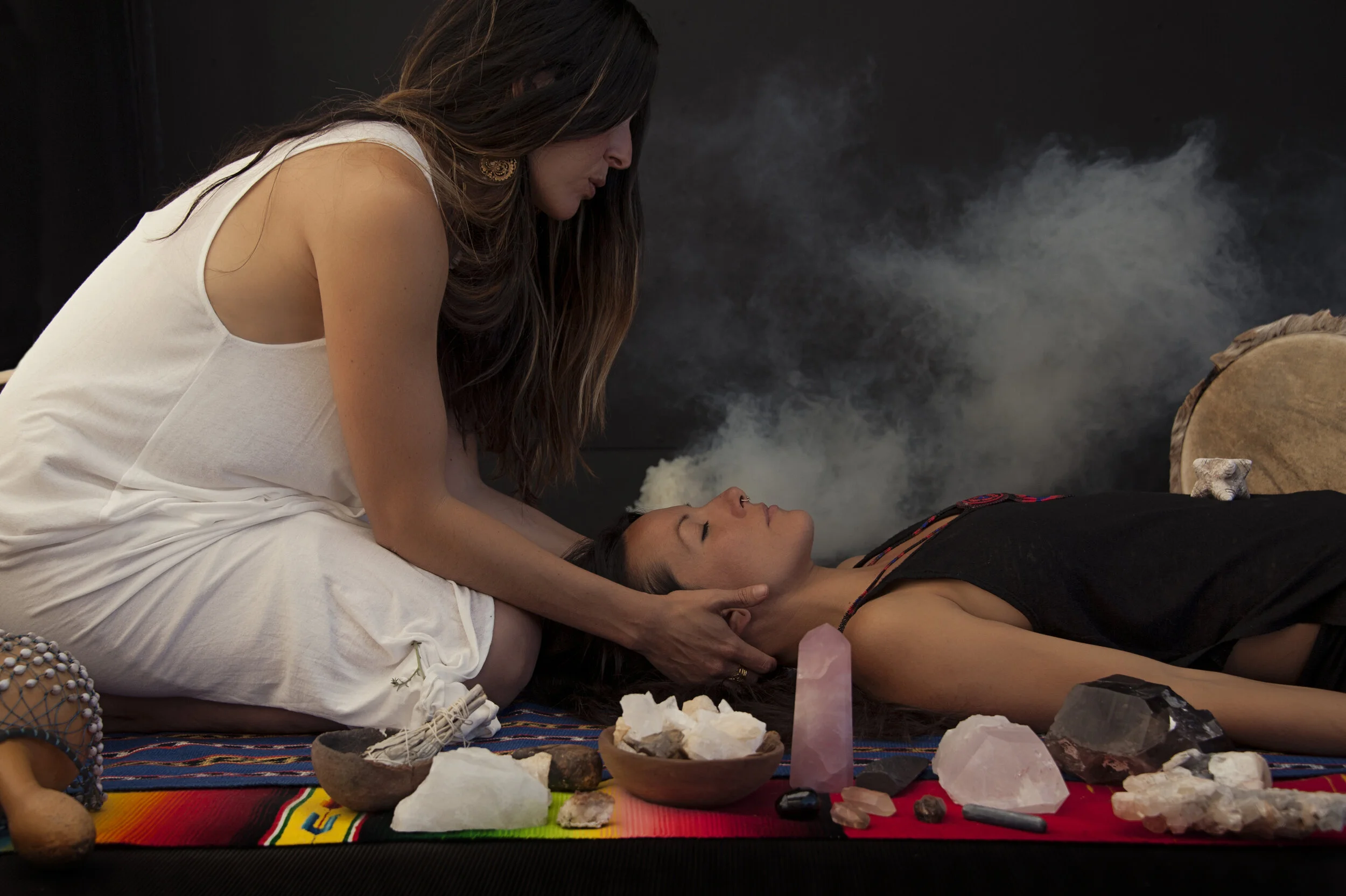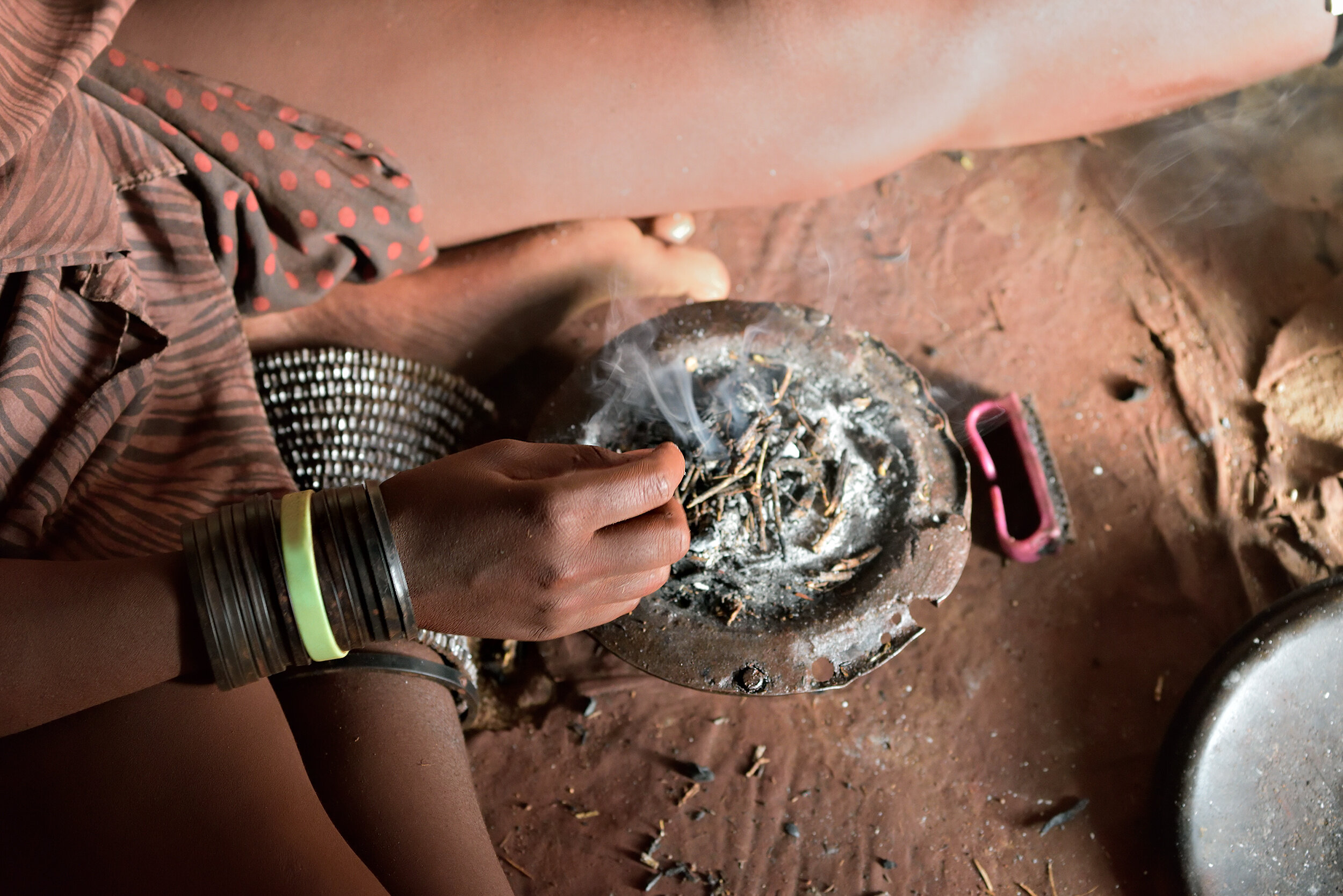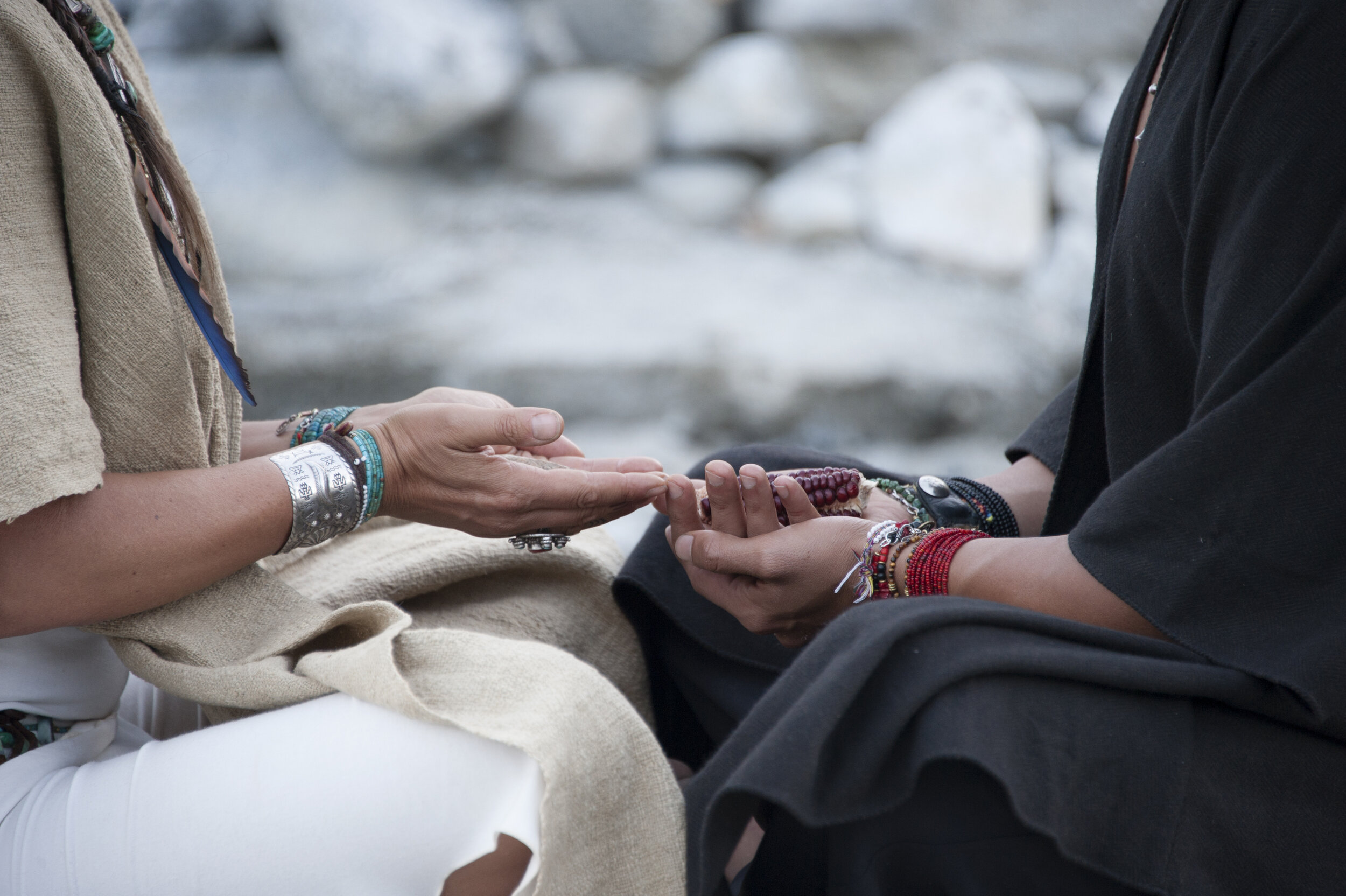How does shamanic healing work?
The shaman's role has been crucial in most Aboriginal cultures for thousands of years. They serve as spiritual and cultural leaders and teachers. The shaman often has the power to heal and perform spiritual rituals, such as healing people, animals, or objects. The shaman communicates with the spirit world, communes with ancestors of the tribe to help bring positive change into their lives.
Some shamanic practitioners today, who may not be part of indigenous culture, heal using standard tools common to all shamanic cultures. Some refer to this set of tools as core shamanism. Anthropologists studying various cultures, from the tribes of South America to Australian Aborigines in the mid 20th century, found that shamans everywhere were using a lot of the same tools.
What is shamanic healing?
Shamanic healing is the oldest of all spiritual healing modalities. It was practiced by our ancestors for millennia, going back to prehistoric times. It is the power of the mind, spirit, and body working together to restore balance. Shamanic healing uses tools that are common to all shamanic cultures. These include drumming, chanting, dancing, fasting, and other rituals to bring about a sense of wholeness in oneself.
What is core shamanism?
Shamanic practices often include specific tools that are common to all shamanic cultures. Anyone who wants to develop a relationship with the spirit world can use these tools. These tools help you communicate with spirits and understand your role in this universe. A shamanic practitioner who wants to be a competent healer will undergo a significant amount of training over many years.
Shamanic Journeying
The primary shamanic tool is the shamanic journey. When a shamanic practitioner journeys, they enter into a trance state, journeys out of the body to other realms of reality, and works with helping spirits. This is in contrast to most forms of meditation which might include trance states but usually do not include out-of-body travel or direct communication with spirits.
Shamanic Worlds
Shamans recognize three different spiritual worlds. The first spiritual realm is called the middle world, the spiritual aspect of the physical world. The second spiritual world, or lower world, is a place that is very natural and filled with plants and animals. The third is the upper world which is much more ethereal and filled with human, human-like, and mythical beings.
A practitioner will travel in one or more of these worlds during a shamanic journey.
Helping Spirits
Shamans always work in conjunction with helping spirits. Some people use the term spirit guides, but this is misleading. Not all helping spirits act as guides. Some do act as teachers.
Most people are somewhat familiar with the term power animal. A power animal is one type of helping spirit. A power animal is one of many animal spirits that have volunteered to work with a person for healing, power, or learning.
How do the shamans of different cultures heal?
The way that shamans heal varies from culture to culture. In many cultures, the shaman heals through prayer and ceremony. Shamans will sing, pray, chant or dance to bring healing energy into their bodies. They may also use objects such as sacred drums or rattles, which are used in healing ceremonies.
All shamans utilize altered states of consciousness for healing. Most cultures use rhythmic methods to access the state necessary for journeying. Shamans can achieve trance through drumming, chanting, or dancing. Some cultures use psychedelic plants or mushrooms referred to as plant medicine.
There are many different types of plant medicine, including psilocybin mushrooms, peyote, fly agaric mushrooms, and ayahuasca.
What is ayahuasca?
I mention ayahuasca here because it is a topic of great interest. Some people think that shamanism is synonymous with the use of “aya”. I do not use it, nor do I lead ayahuasca. It’s possession and use would be illegal in Maine.
Ayahuasca is a plant medicine used by people indigenous to Peru and other parts of the Amazon Basin. It is comprised of two different plants. One plant contains DMT, a highly hallucinogenic compound. DMT breaks down in the stomach, so the second plant has an MAOI inhibitor to allow DMT to pass through the digestive tract.
Ayahuasca "trips" can last for hours, during which people report hallucinations and purging through diarrhea and vomiting. There is no antidote. Once you buy the ticket, there's no getting off the train.
Recently ayahuasca tourism has become very popular, and many people are illegally importing the plants into other countries. Ayahuasca can be a hazardous drug as it can lead to serotonin syndrome and even death. I respect indigenous medicine entirely, but, from a shamanic perspective, it isn't necessary for journeying. When taken out of context and administered by untrained people, any plant medicine can be dangerous.
What are some of the spiritual rituals that a shamanic practitioner might perform?
There are a wide variety of healing rituals and ceremonies shamanic practitioners might choose from depending on the client's needs. The shamanic practitioner may use drumming, chanting, dancing, and healing practices to help the client feel better. A shamanic practitioner will always do a journey to diagnose or assess the spiritual roots of illness.
Anyone practicing shamanism to heal others has undergone a long period of shamanic training. A few of the ceremonies a shamanic healer might perform rituals include power animal retrieval, extraction, or soul retrieval. These address the client's spirit to aid in their natural healing process. With physical illness, a shaman may undo spiritual blockages to a person's healing ability. A shaman is a spiritual healer and not usually a licensed medical provider (though I know some doctors who practice shamanism).
Power animal retrieval
A power animal retrieval is a type of healing journey to connect the client to their power animal. Power animals are spirits that guide and protect humans in many aspects of life. These are individual spirits with whom a client can develop a relationship. Shamans often perform power animal retrieval to restore a client's power or protect them before surgery or childbirth.
Shamanic extraction ceremony
Shamanic extraction is a healing ceremony in which a shaman removes a blockage from the client's energy system. These blockages are called intrusions. Intrusive energy get's stuck in the client's energy body and should be removed to restore proper function. Shamans perform this ceremony to heal a client by re-establishing balance in their energy system.
Soul retrieval
Soul retrieval is a healing journey in which a shaman journeys into the spirit world to retrieve a lost part of a person's soul body. This part, or essence, is often lost via trauma or shock. The shamanic healer performs this journey to aid in the healing process by helping clients regain lost essence. Soul retrieval requires specialized training and is one of the most common ceremonies performed.
How significant a role does intuition play in shamanic healing?
People who receive a calling to go through initiation and partake in shamanic studies are usually already intuitive. As a practitioner is initiated by spirit and learns to be a good healer, their intuition will increase. Once they are trained and become proficient in their craft, a shaman's intuitive abilities will help them see better what spirit is trying to communicate.
Intuition does play a significant role in shamanic practice, but in an extraordinary way. A primary goal of training is for the person to become what's called the hollow bone. A physical hollow bone allows things to pass through it unimpeded. When a shamanic practitioner becomes the hollow bone, they remove obstacles to a clear spirit channel. The intuition is sharpened by being able to communicate better with helping spirits.
How does shamanic healing help your body heal from physical illness, emotional trauma, or spiritual blockages?
Shamanic healing addresses the spiritual component of physical illness. Just as people have physical bodies, they also have minds and spirits. These different parts of each person interact and affect each other. For example, many studies show the effect of mind and body healing approaches. The mind can heal the body. The human spirit can also affect the body and mind.
Addressing the spiritual components of health allows the body or mind to heal naturally. When combined with allopathic medicine, or traditional mental health therapies, shamanism offers a powerful complementary modality. Shamanism is ideal in caring for conditions that have a spiritual origin.
Shamanic healing is particularly effective in working with trauma. For thousands of years, shamans have been performing soul retrieval to heal the fractured self.
Does shamanic healing work?
In a word, yes. I fully believe in the healing power of shamanism. I lve symptom-free from an "incurable" condition and have for years. Many of my clients get significant relief during and after sessions. I know people who have had miraculous healing as the result of shamanic work. There is also growing scientific evidence about the power of shamanic healing, but more work needs to be done.
We know that, even in studies of allopathic medicine, a person's belief system plays a big part in their healing. If you believe that shamanic healing is valid, then your mind will instruct your body to heal after a shamanic practitioner returns or unblocks the spirit's healing ability. If you believe that it doesn't work, you may suffer from the nocebo effect - where expectations create illness.
If you have a shamanic extraction ceremony done to help with healing from open heart surgery and then go out and eat three double cheeseburgers and walk around in a building full of angry people - you can undo some of the work.
Many people expect sudden and miraculous healing during a healing session. Sometimes that happens, but not most of the time. Again, shamanic healing works by creating spiritual conditions that are conducive to healing. Though most people feel some relief during a session, there is usually an integration period.
If you break your arm and go to the hospital, they will put a cast on you. The cast doesn't fix your arm, but it creates a condition that allows the bone to mend. Shamanic healing is a lot like that, and it returns the power for self-healing to take place. It can bolster your spiritual immune system and help return you to wholeness.
What's going on in the spirit realm during shamanic healing?
While spirit is essentially formless, it can be helpful to think of human beings as having multiple bodies - like Russian nesting dolls. You know you have a physical body. If you're a person who can see auras or know about them, this is part of the etheric or energy body. You also have a soul, or astral body, and a spirit body. The astral and spirit bodies are even more formless than the energy body. There are many more bodies, but these are the essentials.
The etheric or energy body
If you've done reiki, acupuncture, or Tai Chi, you have worked with the energy body. The etheric body is closest to the physical body, so they interact a lot. Acupuncture works on meridians which are energy channels the run through the body. Yoga also works with these subtle channels of energy.
Their etheric body is complex with its meridians and organs, and vessels. It can also be divided into two significant components. The etheric double occupies the same space of the body but extends a couple of inches in every direction. It has roughly the body's shape and appears a little more solid to people who can see auras. Then there is the aura, the field that extends from a few feet to a few dozen feet from the body.
Some shamanic techniques work at the level of the energy body. Extraction is the most common. With extraction, a shamanic practitioner removes unwanted energy stuck in a client's energy field - aura and perhaps etheric double. Removing this blocked energy allows the etheric body to function properly - which is critical for good health.
The astral or soul body
The astral body is more formless than the etheric body, and it exists on a plane a bit farther away from the physical body. Shamanic healers call it the soul body. During a journey, the shamanic practitioner splits off a bit of their soul body, which can travel consciously through nonordinary reality.
One of the ways shamanic healing is different from energy healing is that some techniques work directly to heal the soul body. A very common ceremony is called soul retrieval. When you experience a shocking or traumatic event, a part of your soul may leave your body temporarily to retreat to safety. If this part gets stuck and doesn't return right away, we call this soul loss. Soul retrieval returns the lost essence.
Frequently, shamanic healing can help anxiety, depression, even addiction through astral body work.
Is shamanic healing suitable for me?
I believe all people could benefit from shamanic healing work if they are open to it. Every person I have ever met has some level of soul loss resulting from life's traumas. I have used shamanism to heal my PTSD, which comes from severe soul loss.
First, you must seek out modern conventional medical or therapeutic assistance for any mental or physical illness. Shamanic healing works well in conjunction with modern practices, and you should do everything you can to take care of any issues. Shamanic care is not a replacement for your doctor.
The shamanic worldview is animism - the belief that all things have spirits. If this doesn't work with your religious practices or belief system, you may have difficulty accepting spiritual healing. I do not believe there's anything wrong with witchcraft; some of my closest friends are witches. But some belief systems might mistake shamanism for a forbidden form of witchcraft. If you held that belief, you probably would not be reading this, though.
Anthropologists and religious scholars will point out that the roots of Christianity and other formal systems of spirituality have shamanic roots. I don't believe that shamanism is incompatible with other religions. It isn't religion itself. It has no sacred books, or hierarchy of clergy, or central governing body.
To summarise, first seek medical attention for your illness. Then, think about if shamanic healing plays well with your beliefs. Finally, have a conversation with a practitioner and get all your questions answered. Only you can decide if it is right for you.
I just booked a Shamanic Healing Session; what should I expect?
First, don't expect to heal in one session completely. It can happen, but it usually takes time, depending on the issues worked on. Shamanic healing is more about restoring energy and balance than it is about magic wands that you can wave over someone's head and cure instantly.
Each practitioner will work differently, but a typical healing session will consist of a diagnostic journey followed by more healing ceremonies. The exact rituals will depend on the work the practitioner's helping spirits have directed.
Some clients will feel a sense of instant relief. For others, it may take some time before they realize the full effect of the session. Frequently the healer will suggest some integration work the client should realize the full impact of the session.
Conclusion
To summarise, shamanic healing works on a client's spiritual body to create favorable conditions for healing. The shaman acts as a conduit for helping spirits to do the work. A session might consist of many different types of ceremonies, and all practitioners work in slightly different ways. A client can expect to experience shifts during a session, but the full results of the healing will become evident with time.
If you would like to have a healing session with me - click here to get started.
Feeling disconnected? How can shamanic healing help?
My clients come to me for many reasons but one of the things I hear most often is, “I feel disconnected.” For many years, before I began to study and practice shamanism, I felt the same way, so I get it. It’s a feeling that’s hard to describe. The best way I can put it is that you feel cut off from your self, the world, even your loved ones.
Often this feeling comes with a flattening of the emotions. I have had clients describe feeling “dead inside.”
So what’s going on here, from a shamanic perspective? Also, is there anything that can help?
As I remind my clients, shamanism is a wonderful tool for addressing the spiritual components of illness or dis-ease. It does not take the place of medical help or psychological counseling.
With that in mind, it bears getting symptoms of any kind checked out by your provider. A shamanic healer can certainly help the healing process. And sometimes there may be no apparent physical or psychological cause a provider can find.
What’s the diagnosis?
In any healing session, I always begin with what’s called a diagnostic journey. This will tell me what work is in my client’s highest interest on that particular day. Many clients come to me asking for specific ceremonies. Sometimes they’re right about what they need, and sometimes they need some preliminary work before that can take place.
This complaint about the feeling of disconnection, more often than not, indicates to me what we call soul loss. Soul loss usually happens as a result of trauma in our lives, although there are a few other causes.
With soul loss, part of the soul breaks away to remain safe from what’s going on. That part can get lost and not come back. If you have ever had a shocking experience where time seemed to slow down, or you felt outside your body, or you felt like things weren’t real - this is what you’re experiencing.
How can shamanic healing help
Since soul loss is something that has occurred throughout human history, shamans all over the world have developed a technique for healing it. That technique is called soul retrieval.
Soul retrieval reunites the parts of the fractured self so that the client can re-integrate them. With re-integration, there can be a much greater sense of connection, joy, and completeness.
Many clients come to me specifically asking for soul retrieval. I still always do a diagnostic journey for them first. It’s quite possible that other work needs to happen for the soul-essence to feel safe enough to return.
I like to think of these soul parts as a fraction of ourselves that is stuck in the time it got lost. If you had soul part lost when you were 8 years old, that part is still 8 years old. It can’t grow and mature on its own, disconnected from the whole.
So we have to make that part feel safe to reintegrate. It might take a few weeks after a session for the part to completely settle in.
Once a part has been returned, however, it can bring significant power back. Imagine if you had lost your sense of smell when you were 12, and then it was suddenly returned. The world would seem richer, food would taste better. A similar thing happens when a soul essence returns.
I’ll never forget a client who, at the end of a session, excitedly told me, “I actually feel joy! I forgot what that was like.”










